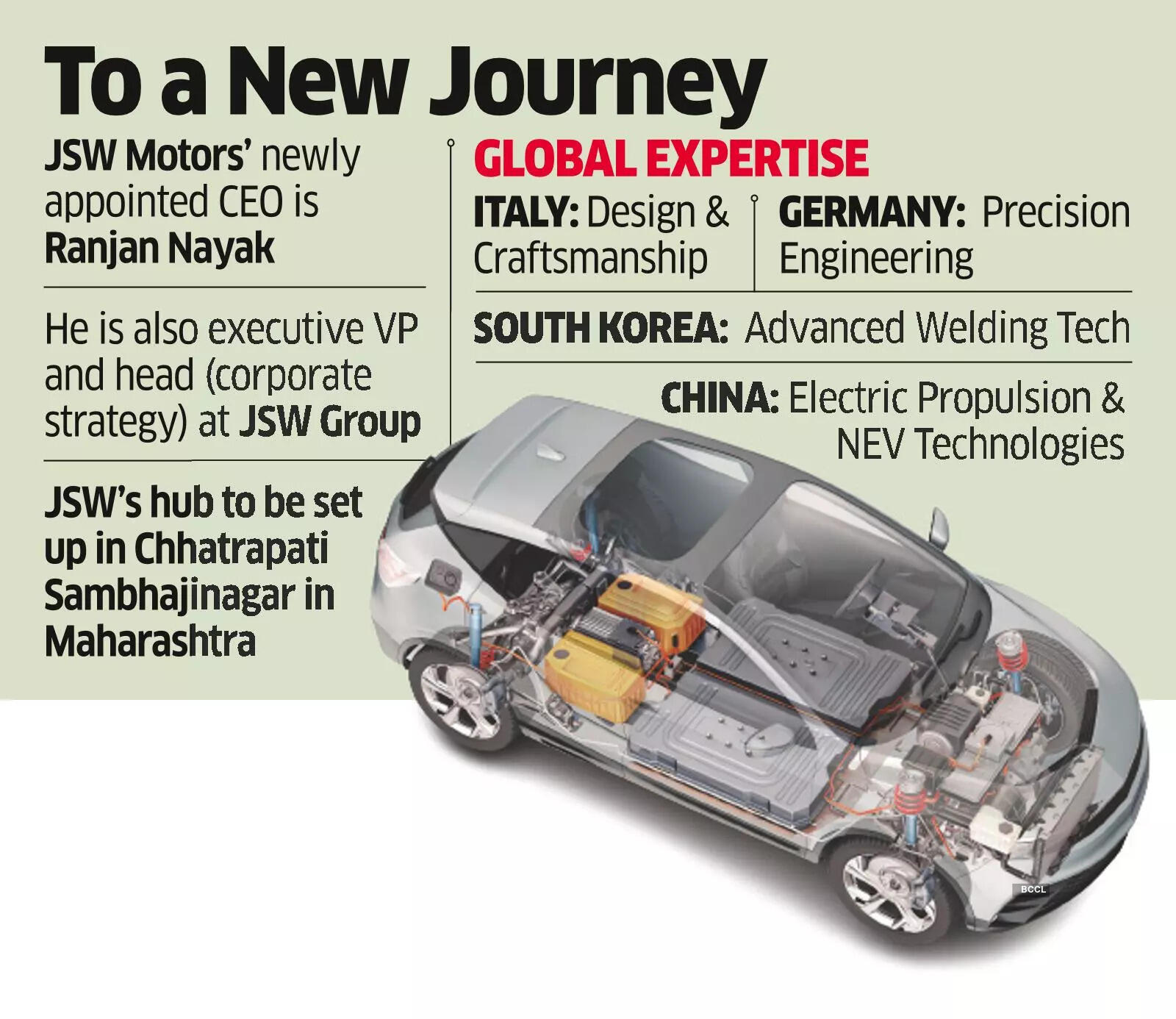The JSW group driven by Sajjan Jindal has created a dedicated engines for vertical-jSW cars. This will be a umbrella platform on the basis of which the group will launch cars focused on new energy vehicles with an investment of up to $ 3 billion in the next five years with the launches that will start in the second half of the FY26. It will be separated from the group’s joint venture with Saic Chinese, JSW MG Motor India.
JSW Motors is in negotiations with three four companies in Italy, Germany, South Korea and China for collaborations to design and develop these cars, which will be sold with the JSW brand, said Ranjan Nayak, recently appointed CEO, told Et in its first media interview. All vehicles will be made in India, with the resources allocated lined up to commission the production structure, research and development.
JSW’s automotive hub, distributed on 630 acres, is coming to Bidkin in Chhattrapati Sambhajinagar in the Maharashtra.

By elaborating the expansion strategy, Nayak said that JSW engines aim to interrupt the electric vehicle market (EV) producing “world -level car products in the country” by exploiting the best technologies from all over the world, including Italy, Germany, South Korea and China, and combining it with the strengths of India in robust chain and digital.
“We are trying to quickly resize our internal automotive technology and we do not remain dependent on any external entities. Our integrated approach allows us to combine global excellence with local relevance, guaranteeing high performance, convenience and sustainability”, said Nayak, adding “, adding” our new energy vehicle (Nev) under the Badge JSW will afford the roads in the second half of the second half of Fy2026. “
Nayak said JSW Motors is drawing on “the unique strengths of the leading partners of the sector” from all over the world, without specifying the details of the companies he collaborates.
“We will combine the crafts and aesthetics of the Italian designers and the German precision in production and engineering with advanced welding technologies of South Korean experiences and China’s skills in the integration of electrical propulsion, in the innovation of the battery and in the new technologies of energy vehicles (Nev) with that of the Indian IT sector in the software and digital integration”, said NAYOK.
He refused to share the details of the investments that the JSW group has scheduled for his automotive company. However, sources of the sector said that the group has lined up an investment for an amount of $ 2-3 billion in its automotive activity in the next five years.
Similar to its strategy in the steel sector, JSW intends to “energize suppliers and competitors who move with car ecosystems to raise us” to accelerate the passage of India to clean mobility and reduce their dependence on oil, said Nayak, who is also executive vice president and head, corporate strategy, JSW group.
“Our goal is to push the penetration of new 50%energy vehicles, offering electric vehicles, hybrids and world-level plug-in at affordable prices,” he said.
Nayak said that China is at the forefront of EV and hybrid innovation for vehicles and has become an integral part of the global automotive supply chain. While the world moves rapidly towards sustainable mobility, technologies such as plug-in hybrid electric vehicles (Phev), pioneers from Chinese car manufacturers, are redefining the panorama of the sector. By combining the best global technologies with the strengths of India, JSW Motors intends to bring high quality vehicles, technologically advanced, efficient from an energy point of view.
This approach will provide “unparalleled value to Indian customers and push the country to a safer, sustainable and self -sufficient automotive future,” he said.
“Like the leaders of the global sector, including those from Europe, America (such as Tesla and GM), and Japan have embraced the relevant progress by China and other innovation hubs, integrating them into the Indian ecosystem. Promotes EV, Phev and hybrid technologies is also fundamental from the point of view of energy safety.” he said.



